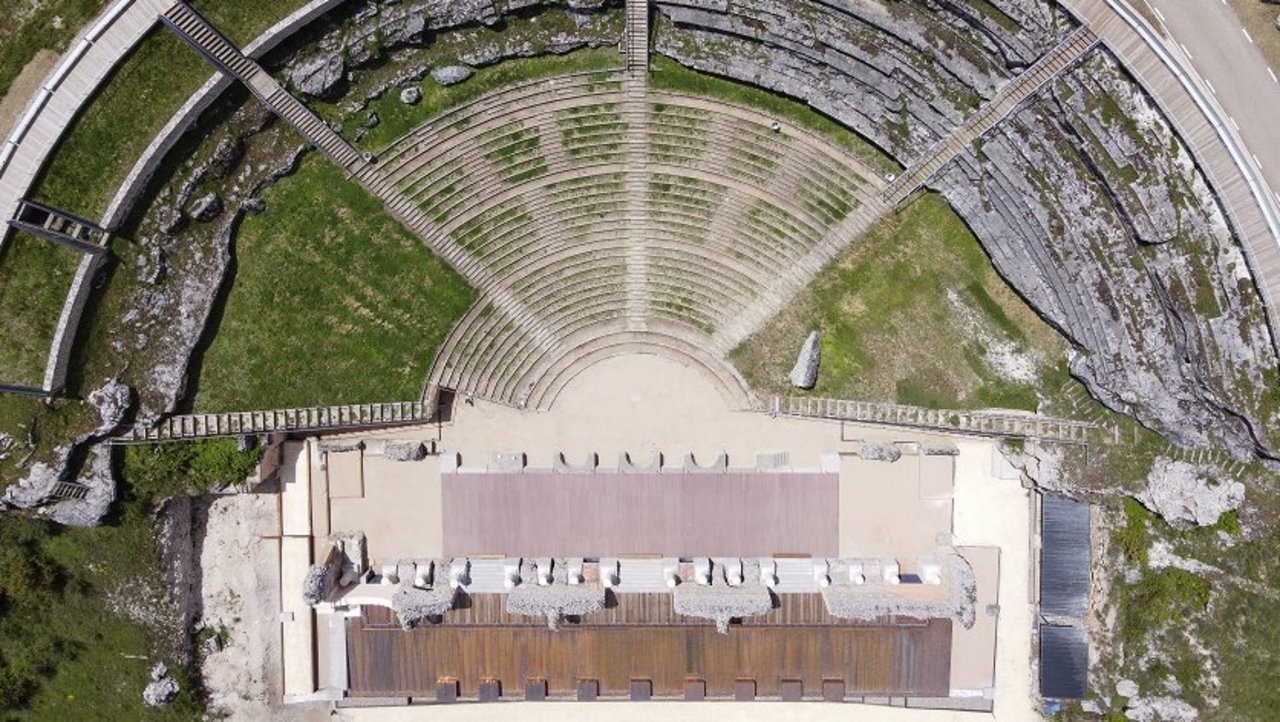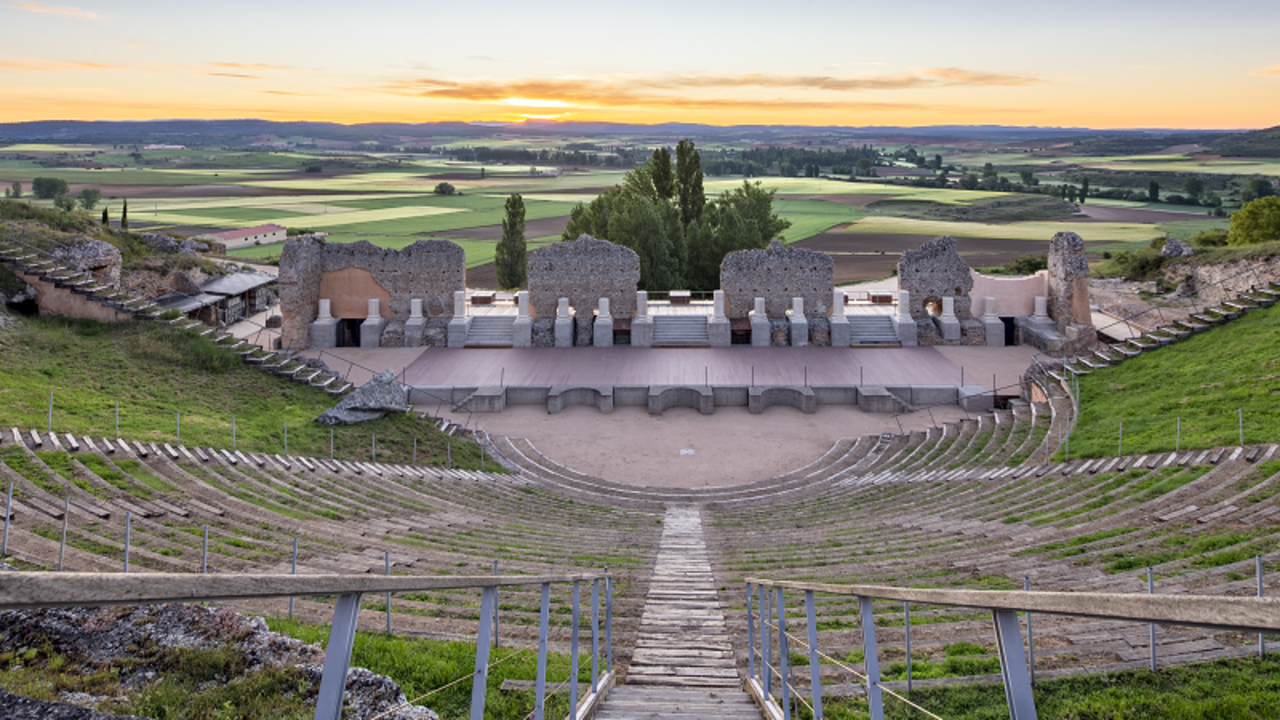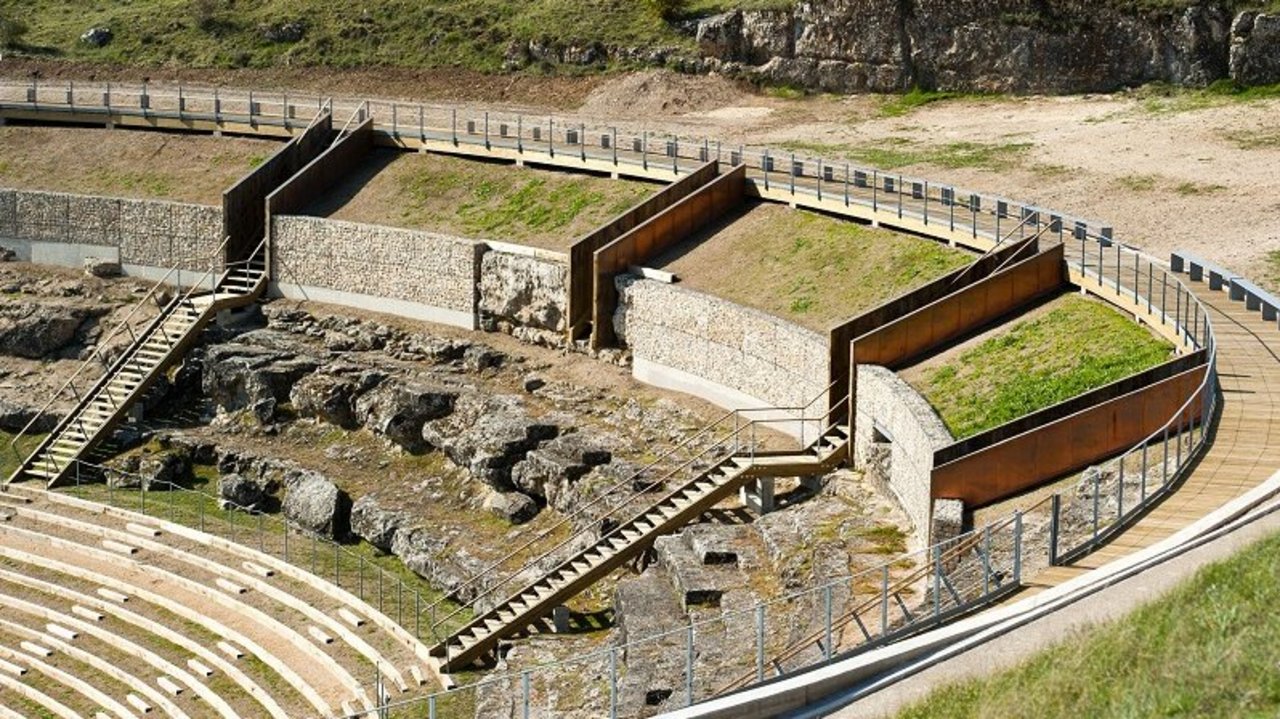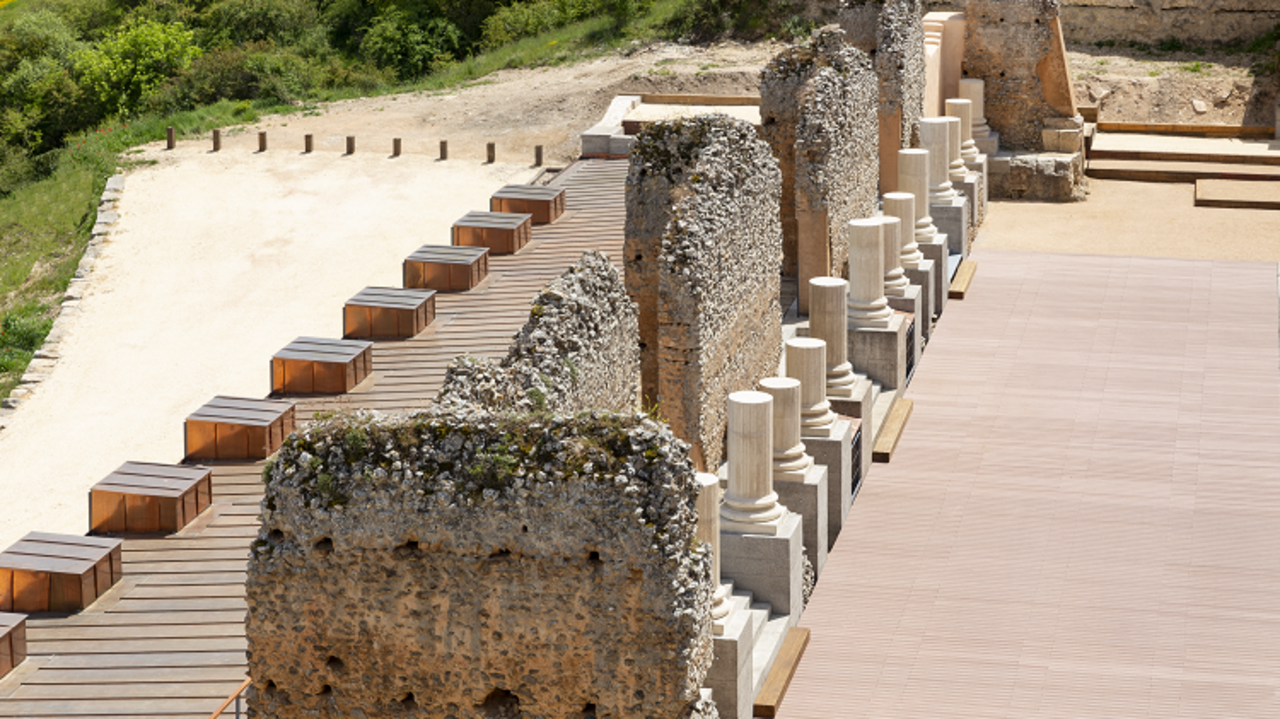What is archaeology after all? I do not know whether archaeology should be defined as an art form or a science, but one thing is absolutely clear, namely that archaeology is increasingly dependent on a multitude of sciences and that the archaeologist, when excavating, does not unearth objects but human beings.
Mortimer Wheeler R. E. (1954), Archaeology from the earth, Oxford: Clarendon Press.
The restoration of the Roman Theatre of Clunia is the conclusion of a research process that began with the excavation and subsequent architectural interpretation. The creation of a multidisciplinary team of architects and archaeologists since the beginning of the work has led to a continuity from the reconstruction of the architecture of the past to the reconfiguration of its space in order to protect it, make it comprehensible and return it to the use for which it was conceived. The research made it possible to understand the building in its original situation and in its various historical transformations, using the design discipline as a research mechanism. The reconstruction of the original theatre from the archaeological remains becomes an authentic exercise in architecture, where absence becomes the engine that allows us to understand the existing ruins from the composition of the missing elements.
The fact that it is now possible to hold theatrical or musical performances in a space that was conceived for this purpose from the outset means that the Clunia theatre continues to be a living building that is compatible with the preservation of its theatrical use and the maintenance of its archaeological value. Therefore, and with the intention of addressing the two fundamental aspects that derive from the theatre, namely its archaeological research and its consolidation as an archaeo-scenic space, a series of actions have been implemented that allow for a greater recovery of the Roman building, designing a new image that allows for the use and understanding of the theatre.
Texts extracted from: de la Iglesia Santamaría M. Á., Álvarez Álvarez D. (2024), Restoration of the Roman Theatre of Clunia (1994-2004), in Ferro L. (ed.), Miguel Ángel de la Iglesia Santamaría, Dario Álvarez Álvarez. Teatro di Clunia, Santarcangelo di Romagna: Maggioli Editore.
The act of covering/protecting the archaeological excavation can be done in many ways. I can choose to cover it with a canopy and I am done there. A canopy repairs and fulfils its function but tells me nothing about the site and the ruin. The terms “protection and preservation” can lead to ambiguous interventions and deflect from the very problem of Architecture. The fragments of the ancient ask to be given meaning again. Enhancing the places of archaeology is a demanding exercise of interpretation and translation to the present, working with the tools of archaeological knowledge and those of architectural design. The present is necessary, because there is no such thing as an abstract and timeless respect for the ancient, but there are various forms (all partly destructive) of living with the remains of the ancient. And reuse may seem destructive, yet it guarantees preservation.
Appropriating the ruin is a complex itinerary of knowledge that has as its objective a project that is consistent with the layers, with the temporal sequences, making them visible. A project capable of glimpsing the whole without reconstructing it, highlighting the virtuality of the ruin as it has come down to us. It is a special method, also a privileged one, an opportunity to interrogate places, to get to know them, grasping their measurements, proportions, the path, the pace, the rhythm of the landscape, also grasping their interruptions, inconsistencies, changes of orientation, voids. Everything together contributes in the project to make the deep, hidden and secret structure of the findings and places legible, grafting itself into the void due to lack. But it does not reconstitute a lost form, it enters into the system of rules, into the mechanism and transforms it, it builds the pertinent architecture of the stratifications, finally highlighting a network of formal correspondences.
Aesthetic reading of the ruin
Nothing is more seductive - and nothing, in certain cases, is better founded - than showing forms subjected to an internal logic that organises them. A geometric expression, a precise organization of space, a numerical relationship of proportions, suggesting a notion of balance, of order, the construction choices, the material. Every datum has a narrative value, it becomes a language that translates into a story and that will then reveal itself (for those who compose it) as a sort of initiation.
The Project
Working with fragmented forms (the ruins) means finding a (formal) artifice capable of becoming itself an instrument of knowledge of reality (in this case the archaeology, the layers). In this way the evocative power of the ruins is enhanced by the project, which makes the recognized rules, the archaeologists' data, legible through a few thoughtful (architectural) moves. The project works with the grammar of the ancient, but with a new language (because it depends on the imagination and creativity of the designer). [...] The poetics of architectural composition is the art, the procedure, the journey that takes place to make the lost architectural spatiality (of the ruins), the settlement idea, the relationship with nature understood.
In the project for the Roman Theatre of Clunia, presented here, one finds all these steps of knowledge and design. The hidden and recognized rules of the ancient theatre are elaborated into a unitary whole (geometric and otherwise) obeying the needs of an idea: in a certain sense the construction of new fragments among the ancient fragments, following a unique narrative order. Each new fragment of architecture (the parts of the summa cavea) reveals the fascination of what is missing but also the imagination for what it could be, insinuating itself into the secret of things, working on the possible signs, pertinent to the identity of a place, of a theatre in this case, re-appropriating the complex of rules and techniques, of customs and innovations that have built the city and its territory without ever being reconstructive or mimetic. Thus the pieces of the project and the archaeological fragments are the tiles of a story, in which we can walk around inside: something seems to go its own way, instead, as in a team game, it is trying to make room for the others. No one tile is indispensable, but all together they form a film: a Promenade architecturale. A sort of hidden thread composed and coherent within which we find a logical sequence between things. A reasonable connection that without the project would no longer be possible to grasp. Then there is an unexpected, alienating element: the presence of the museum below the level of the stage, a kind of theatre coup. And here we return to the role of the imagination.
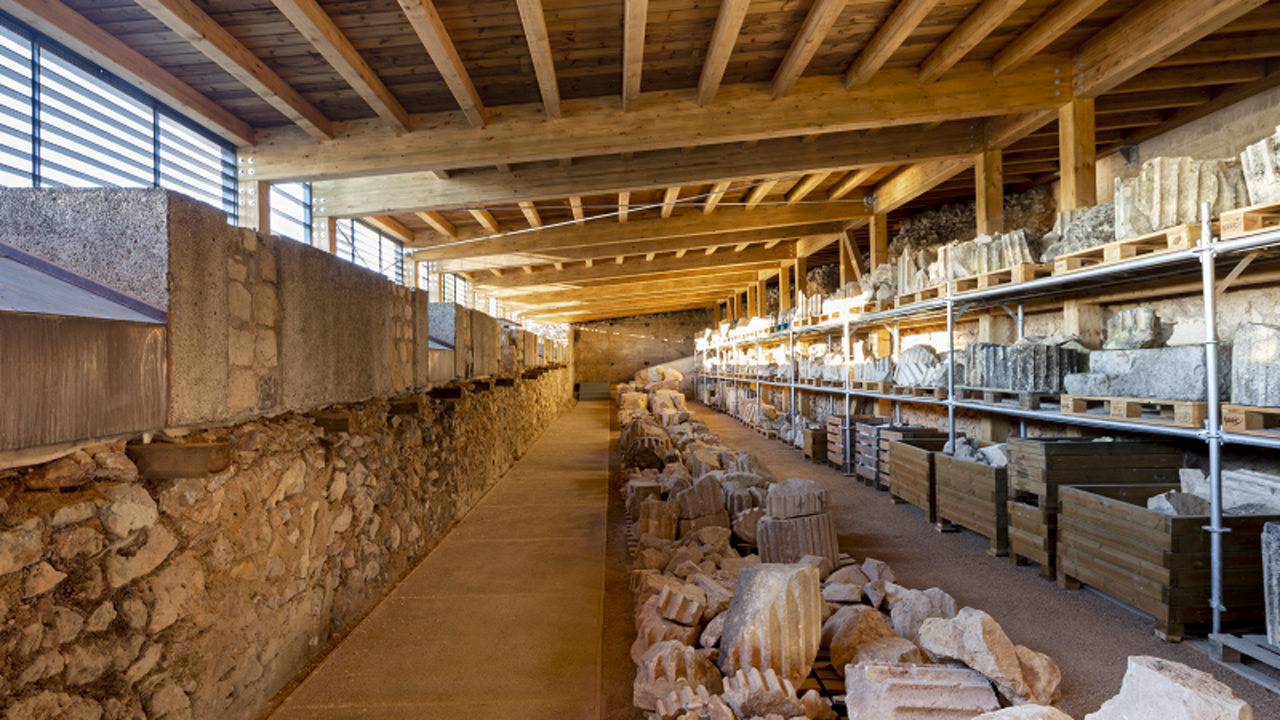
© Credits immagini: Emanuele Ciccomartino | Álvaro Viera
-
Flyer iguel Angel de la Iglesia
PDF
-
Exhibition room Sheet
PDF
